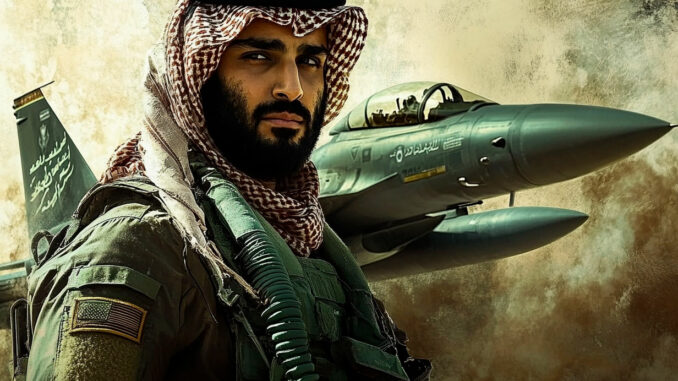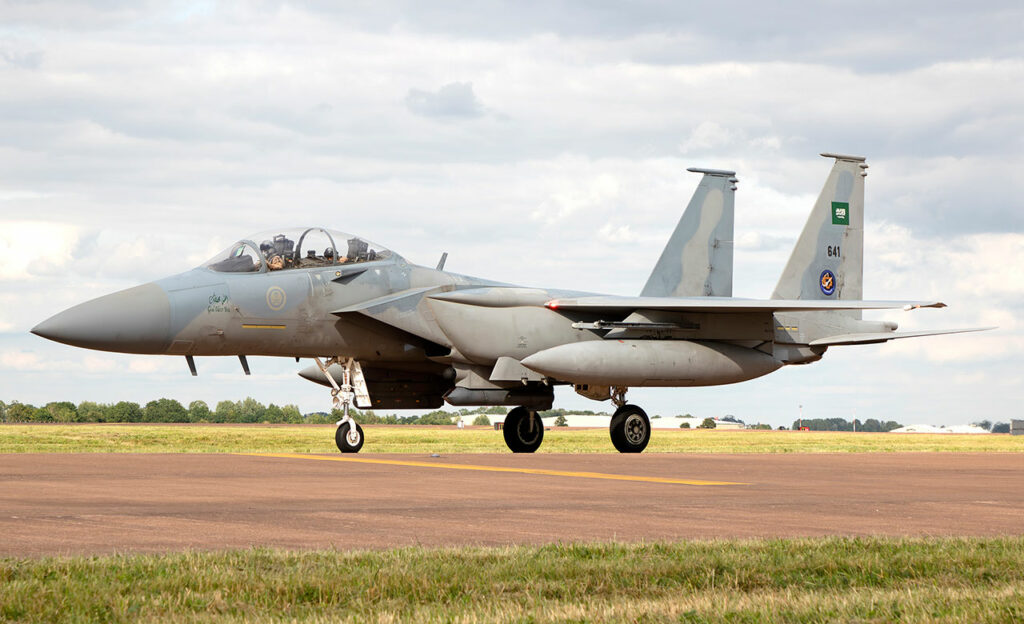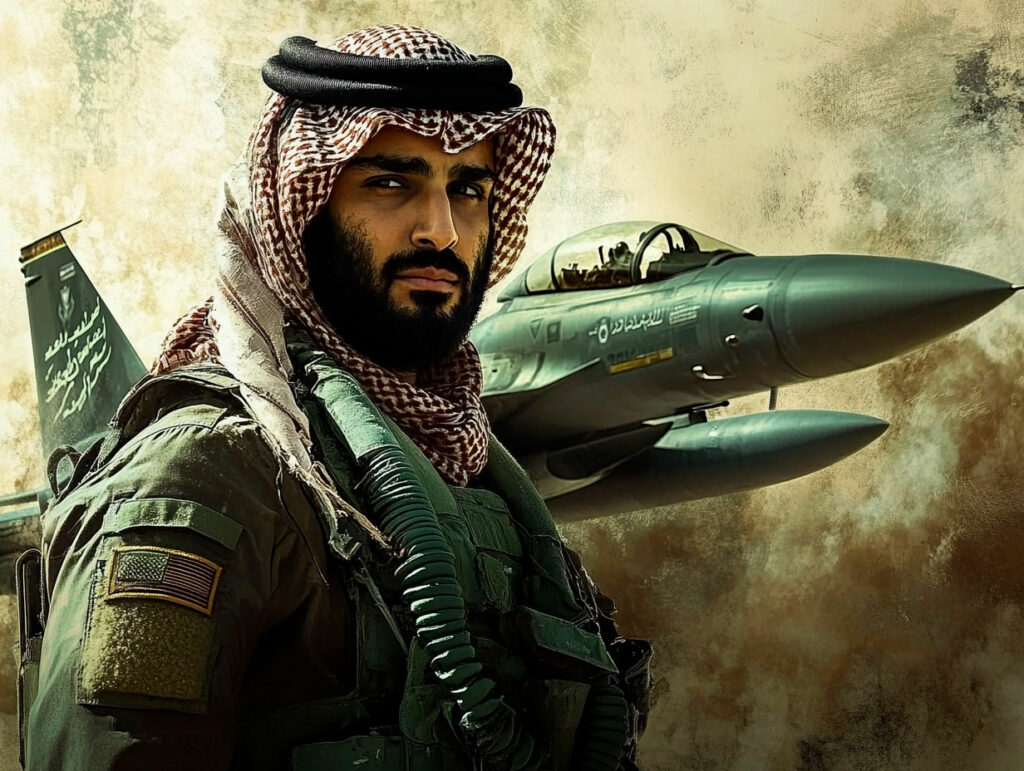
The Saudi army is growing stronger under MBS. Discover Saudi Arabia’s strategic stakes and military influence in the Middle East.
Historical background and current position
Saudi Arabia occupies a major geographical position in the Middle East. Bordered by the Persian Gulf and the Red Sea, the country controls vital shipping lanes for world trade. Over the decades, its Saudi army has benefited from massive investment to ensure its sovereignty and gain regional influence. Today, under the leadership of Mohammed Ben Salmane (often referred to as MBS), policymakers are seeking to establish a strong military presence to meet a range of strategic challenges.
Hydrocarbon exports have long been Saudi Arabia’s main source of revenue. The challenge is to secure these resources and their infrastructure. At the same time, the Saudi government is seeking to diversify its economy, notably through the Vision 2030 plan, spearheaded by MBS. This transformation also implies a reorganization of the defense apparatus and increased modernization of military equipment.

Modernization of the Saudi army
The Saudi army, with some 250,000 to 300,000 active soldiers according to various sources, is pursuing a vast equipment acquisition program. Arms imports focus mainly on combat aircraft, air defense systems and naval equipment. According to the Stockholm International Peace Research Institute (SIPRI), Saudi Arabia was one of the largest arms importers between 2015 and 2020. The United States remains its main supplier, followed by the United Kingdom and France.
The defense budget varies between 50 and 55 billion euros per year. These sums finance the purchase of fighters such as the F-15 and Eurofighter Typhoon, as well as the maintenance of sophisticated radar systems. At the same time, MBS is encouraging the development of a local defense industry to reduce dependence on foreign suppliers. Partnerships have been signed with international firms to produce aeronautical and naval parts in Saudi Arabia, contributing to the training of local technicians and engineers.
Regional relations and alliances
On a regional level, Saudi Arabia is seeking to forge partnerships to counter certain perceived threats. Tensions with Iran are a central element of Saudi defense policy. The aim is to maintain a strategic balance in the region, particularly in the Persian Gulf. In this respect, cooperation with the United States is essential. Washington provides logistical and intelligence support. In addition, the presence of American bases in other Gulf countries influences the Saudi position on major security issues.
Beyond the Gulf, the country is involved in regional affairs in Yemen and certain countries in the Levant, seeking to curb any progress made by actors hostile to its interests. In addition, ties with Egypt are being strengthened through joint military exercises, contributing to the cohesion of Arab forces in the face of shared risks.
Internal factors and their impact on defense policy
Saudi Arabia has a population of over 35 million. The government wants to recruit more citizens into the Saudi army. The idea is to capitalize on a young population to fuel a modern military sector, both technologically and strategically. This will require more advanced recruitment and training programs.
On the domestic front, MBS’s rise has been accompanied by economic and social reforms. The desire to accelerate domestic growth is reflected in the partial reorientation of defense policy. Priorities include investing in military research and development, improving cybersecurity and strengthening local production capacity. The strategy is pragmatic: reduce dependence on foreign suppliers and create jobs locally.
Geopolitical challenges
Rivalry with Iran remains one of the most sensitive issues. The two regional powers clash on several fronts, from Yemen to Syria. The maritime borders in the Persian Gulf are a nerve center, where the Saudi navy patrols to guarantee the security of energy flows. Fluctuating diplomatic tensions with Tehran can lead to occasional escalations, justifying the Saudi need to maintain a ready and reactive army.
Relations with Israel also give rise to debate. Although official normalization has not yet been fully achieved, there are signs that the two countries may eventually collaborate on security issues. This prospect is part of a drive to balance Iran’s power, while opening up new avenues for regional cooperation.
Innovation and military technologies
The economic diversification sought by MBS is accompanied by investment in innovation. Artificial intelligence (AI) and military robotics projects are being studied to enhance the effectiveness of the Saudi army. For example, Saudi Arabia is exploring reconnaissance and combat drones, with the aim of monitoring vast desert and coastal areas.
The authorities are also encouraging the development of high-performance missile defense systems. Adapting to new threats, such as armed drone attacks, requires constant technological monitoring. The local drone production project could generate highly-skilled jobs and consolidate the defense industrial base.

Future influence and prospects
In the medium term, Saudi Arabia is emerging as a key player in Middle Eastern security. The modernization of the Saudi army, supported by a substantial defense budget, is consolidating an already significant force. At the same time, economic openness is fostering new alliances and the reorganization of its military sector.
Mohammed Ben Salmane is banking on targeted military partnerships, while promoting national production. This mixed approach, combining arms purchases and local development, seeks to reduce strategic vulnerabilities. Relations with the major Western powers, notably the United States, will remain crucial, however, to guarantee supplies of sensitive equipment and access to advanced expertise.
Saudi Arabia, aware of its role as an energy supplier, places the security of its oil and gas infrastructures at the heart of its priorities. Attacks on these facilities, such as those suffered in 2019, illustrate the importance of a comprehensive defense system. In the years to come, the Saudi army will continue to evolve to anticipate regional and international threats, whether conventional or asymmetric.
Strengthening cybersecurity also figures prominently in the overall defense strategy. Investments in this area are aimed at protecting critical networks and countering potential intrusions. This technological aspect requires a skilled workforce, hence the creation of dedicated courses of study in universities and research centers.
Saudi Arabia has positioned itself as a leading military power in the Middle East. Its army benefits from a high level of financial support and an ambitious modernization program. Regional and international alliances, combined with MBS’s determined leadership, are shaping a defense policy focused on protecting national interests and securing a vital geostrategic space. This dynamic, underpinned by a determination to develop a local defense industry, should keep Saudi Arabia among the most influential states in the Middle East over the coming decades.
War Wings Daily is an independant magazine.